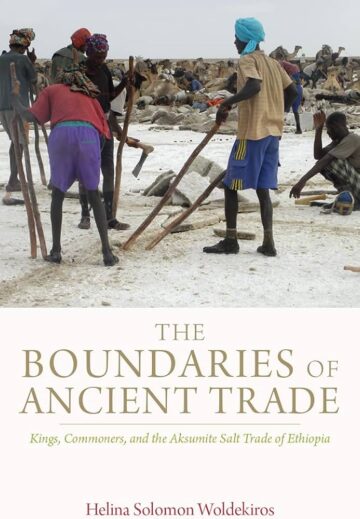Salt is a nutritionally essential food for people and animals. It’s also a uniquely valued and symbolic trade commodity worldwide. Archaeologist Helina Woldekiros takes a deep dive into the legendary Afar salt trail in northern Ethiopia — one of the last economically significant caravan-based trade routes in the world — in her book, “The Boundaries of Ancient Trade.”
For thousands of years, farmers in the Tigray, Amhara and Afar regions of Ethiopia and Eritrea have run caravans of nearly 250,000 people and pack animals annually along the 80-mile salt route. The trail is extreme, moving from cool high-altitude farmlands to one of the hottest and most dramatic deserts on earth. The conditions have not changed much over millennia, and neither have the methods of caravan travel and salt collection — though caravanners today are linked to global networks.

In her fieldwork, Woldekiros followed the salt route with her own donkey and camel caravan, observing and interviewing over 150 Arho (caravaners), salt miners, salt cutters, warehouse owners, brokers, shop owners and salt village residents to model the political economy of the ancient Aksumite state. Drawing on this rich ethnographic data as well as archaeological evidence, Woldekiros shares what she has learned about how salt brings together commoners as well as kings.
The salt trade is a compelling setting in which to investigate the organization of ancient trade. Woldekiros’ book makes a key contribution to theoretical discussions of hierarchy and more diffuse power structures in ancient states.
Woldekiros also contributes new insights into the logistics of pack animal-based trade and variability in the central and regional organization of global ancient trade. The book examines how the organization of the salt trade functioned within the broader socioeconomic and political framework of northern Ethiopia during different periods — including the Aksumite period, the Medieval/historical period and now in modern days. The work generates new interest in the region as an area of global relevance in archaeological and anthropological debates.
About the author
Helina Woldekiros is an assistant professor of archaeology in Arts & Sciences at Washington University in St. Louis. Her work focuses on human adaptations in the Horn of Africa during the beginnings of food production, agricultural diets, pastoralism and mobile responses to climatic change in extreme ecological and environmental settings.
